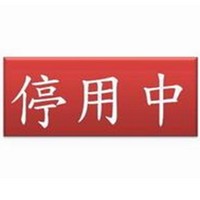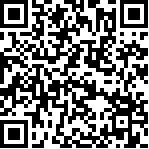藥品名稱
drug name | 6個月至17歲(含)以下公費四價流感 0.5mL/支(Vaxigrip Tetra) |
| 藥檔狀態 | 停用 |
成 份
Ingredient | Influenza Virus vaccine |
| 單位含量 | 0.5 mL/syringe |
| Dosage Forms | Suspension Prefilled Syringe, Intramuscular [preservative free]: 0.5 mL |
| 外觀描述 | |
| Appearance | |
廠商名稱
Manufacturer | 賽諾菲股份有限公司 |
製 造 商
Manufacturer | SANOFI PASTEUR |
字 號
Product ID | 衛部菌疫輸字第001036號 |
藥理分類
Pharmacologic Category | Vaccine; Vaccine, Inactivated (Viral) |
作用機轉
Mechanism of action | Promotes immunity to seasonal influenza virus by inducing specific antibody production. Preparations from previous seasons must not be used. |
| 用途/適應症 | |
| Use |
Influenza disease prevention
The Advisory Committee on Immunization Practices (ACIP) recommends routine annual vaccination with the seasonal influenza vaccine for all persons≧6 months of age who do not otherwise have contraindications to the vaccine. The ACIP and American Academy of Pediatrics (AAP) recommend use of any age and risk factor appropriate product and do not have a preferential recommendation for an influenza vaccine product; in addition to inactivated influenza vaccines (IIV3, IIV4), the live attenuated vaccine (LAIV4) may be used for persons≧2 years of age and recombinant influenza vaccine (RIV) can be used in persons ≧18 years of age (AAP 2020; CDC/ACIP [Grohskopf 2020]).
The Canadian National Advisory Committee on Immunization (NACI) recommends the following (NACI 2020): Annual vaccination with seasonal influenza vaccine for all persons≧6 months of age who do not have contraindications to the vaccine. The following influenza vaccine preferences should be considered:
● Persons 6 to 23 months of age: Quadrivalent inactivated influenza vaccine (IIV4) is preferred; use trivalent inactivated influenza vaccine (IIV3) if IIV4 is not available.
● Persons 2 to 17 years of age: Either IIV4 or LAIV (if appropriate) is preferred; use IIV3 if neither IIV4 nor LAIV is available.
● Persons≧65 years of age: IIV3-HD (high dose) is preferred over IIV3-SD (standard dose); however, any available IIV3 or IIV4 vaccine may be used for public health program-level decision making.
● Health care workers: Either IIV4 or IIV3 are recommended; LAIV should not be used.
When vaccine supply is limited, target groups for vaccination (those at higher risk of complications from influenza infection and their close contacts) include the following (CDC/ACIP [Grohskopf 2020]):
● All infants and children 6 to 59 months of age
● Persons≧50 years of age
● Infants, children, and adolescents (6 months to 18 years of age) who are receiving long-term aspirin or salicylate therapy, and therefore, may be at risk for developing Reye syndrome after influenza
● Women who are or will be pregnant during the influenza season
● Patients with chronic pulmonary disorders (including asthma) or cardiovascular systems disorders (except isolated hypertension), renal, hepatic, neurologic, hematologic, or metabolic disorders (including diabetes mellitus)
● Persons who have immunosuppression due to any cause (including immunosuppression caused by medications or HIV)
● Residents of nursing homes and other long-term care facilities
● American Indians/Alaska Natives
● Persons who are extremely obese (BMI≧40)
● Health care personnel, including students in these professions, who will have contact with patients and other persons not directly involved in patient care but who may be exposed to infectious agents (eg, clerical, housekeeping, volunteers)
● Household contacts (including children) and caregivers of neonates, infants, and children <5 years of age (particularly neonates and infants <6 months of age) and adults≧50 years of age
● Household contacts (including children) and caregivers of persons with medical conditions which put them at higher risk of severe complications from influenza infection
In addition, the NACI also recommends vaccination of patients with neurologic or neurodevelopment conditions including neuromuscular/neurovascular/neurodegenerative conditions, seizure disorders (including febrile seizures in pediatric patients and isolated developmental delay) but excluding migraines and psychiatric conditions without neurological conditions (NACI 2020).
|
衛福部核准適用症狀
MOHW approved indications |
Vaxigrip Tetra適用於成人及6個月(含)以上兒童之主動免疫接種,預防此疫苗所涵蓋之兩種A型及兩種B型流感病毒所引起的流感相關疾病。
|
| 常用劑量 | 0
(藥品劑量會因人或病情增減,請依照醫師指示服用。) |
| Dose |
仿單:
年齡介於6個月-17歲的兒童:0.5毫升一劑。
年齡小於9歲且先前未曾接種過流感疫苗的兒童,應至少間隔4週後再接種第2劑疫苗0.5 毫升。
年齡小於6個月的兒童:VaxigripTetra的安全性及療效資料尚未建立。目前無相關數據。
Note: Immunization during coronavirus disease 2019 (COVID-19) pandemic: Routine vaccination should not be delayed because of the COVID-19 pandemic (CDC 2020; WHO 2020). In general, simultaneous administration of all vaccines for which a patient is eligible (according to current immunization schedules/guidelines) is recommended (ACIP [Ezeanolue 2020]). However, influenza vaccination in patients with suspected or confirmed COVID-19 infection (regardless of symptoms) should be postponed until the patient is no longer acutely ill and/or in isolation to avoid exposure to health care personnel and other patients (CDC/ACIP [Grohskopf 2020]; CDC 2020). Additional information is available from the CDC, the American Academy of Pediatrics, and the Immunization Action Coalition.
Influenza seasons vary in the timing and duration from year to year. In general, vaccination should preferably occur in September and October (in US) to ensure optimal immunity prior to onset and for the full duration of influenza activity in the community. Early vaccination (in July or August) for an upcoming influenza season has been associated with suboptimal immunity before the end of an influenza season, particularly in older adults. Vaccination should continue throughout the influenza season as long as vaccine is available. ACIP and AAP do not have a preference for any given inactivated influenza vaccine (IIV) formulation when used within their specified age indications and appropriate risk factor selection (if applicable) (AAP 2020; CDC/ACIP [Grohskopf 2020]). According to ACIP, doses administered≦4 days before minimum interval or age are considered valid; however, local or state mandates may supersede this timeframe (ACIP [Ezeanolue 2020]).
Immunization, annual: Note: Age is age at the time of the first dose.
Infants≧6 months and Children <9 years: The number of doses needed per flu season is dependent upon vaccination history (see below) (AAP 2019; CDC/ACIP [Grohskopf 2020]).
One dose: If the patient received≧2 doses of trivalent or quadrivalent influenza vaccine prior to July 1 preceding the current flu season start. The 2 doses need not have been received during the same season or consecutive seasons.
Two doses (separated by≧4 weeks) if any of the following:
‧ It is the patient`s first season of vaccination.
‧ Patient received≦1 dose of trivalent or quadrivalent influenza vaccine prior to July 1 preceding the current flu season start.
‧ If vaccination history cannot be determined.
Note: A child turning 9 years of age between the first and second dose should still receive 2 doses.
Children≧9 years and Adolescents: A single dose per season is needed.
|
懷孕分級
Pregnancy Risk Factor |
依文獻內容判定系統稽核懷孕分級建置為:B
仿單
去活性流感疫苗可在懷孕的任何時期接種。
相較於第一孕期,多數的安全性資料皆來自於第二孕期及第三孕期接種。然而,從全球使用去活性流感疫苗的數據來看,去活性流感疫苗對胎兒及母體並無任何不良影響。 尚無懷孕婦女使用VaxigripTetra的資料。
根據一項動物研究的結果顯示,VaxigripTetra 不會對懷孕、胚胎/胎兒的發育及出生後的早期發育有直接或間接的傷害。
UTD
Inactivated influenza vaccine (IIV) has not been shown to cause fetal harm when given to pregnant women, although information related to use in the first trimester is relatively limited (CDC/ACIP [Grohskopf 2020]).
Maternal vaccination provides passive immunization to the newborn and decreases the risk of hospitalization due to influenza in infants <6 months of age (ACOG 2018).
The risk for severe illness and complications from influenza infection is increased during pregnancy, particularly during the second and third trimesters (CDC/ACIP [Grohskopf 2020]). Pregnant patients infected with influenza have a higher risk than nonpregnant patients of progression to pneumonia, hospitalization, and ICU admission (ACOG 2018). Influenza vaccination decreases the risk of laboratory-confirmed influenza and hospitalization in pregnant patients (Thompson 2014; Thompson 2019).
The efficacy of influenza vaccination in pregnant patients is similar to nonpregnant adults. Influenza vaccination is recommended annually and should be given to pregnant patients even if they were vaccinated in a prior pregnancy (ACOG 2018). Influenza vaccination with any licensed, recommended, age-appropriate IIV or recombinant influenza vaccine (RIV) is recommended for all patients who are pregnant during the influenza season and who do not otherwise have contraindications to the vaccine. Vaccination may be done at any time during pregnancy (CDC/ACIP [Grohskopf 2020]).
Pregnant patients should observe the same precautions as nonpregnant patients to reduce the risk of exposure to influenza and other respiratory infections (CDC/HHS 2020). When vaccine supply is limited, focus on delivering the vaccine should be given to patients who are pregnant or will be pregnant during the flu season, as well as mothers of newborns and contacts or caregivers of children <5 years of age (CDC/ACIP [Grohskopf 2020]).
Data collection to monitor pregnancy and infant outcomes following exposure to influenza vaccine is ongoing.
-----------------------------------------------------------
[FDA(美國食品及藥物管理局)懷孕分級說明:
A:對照試驗無法證實懷孕初期及後期使用會危害胎兒。
B:動物試驗無法證實對胎兒有害,但缺乏人類對照試驗;或動物試驗有副作用報告,但無法證實對懷孕初期及後期之胎兒有害。
C:動物實驗中對胎兒有害但缺乏孕婦對照實驗;或無動物及孕婦試驗。
D:證實對胎兒有害,但疾病對孕婦有生命威脅或較安全藥品無法使用或無效時可使用。
X:證實對胎兒有害,且使用後危害大於可能的益處。孕婦及可能懷孕婦女禁用。]
|
| 禁忌症 |
對活性成分、任何賦形劑,或任何殘存的微量成分如新黴素(neomycin)、甲醛(formaldehyde)和辛苯聚醇9 (octoxynol-9)發生嚴重過敏反應者(例如:全身性過敏反應),請勿給予VaxigripTetra。
|
| Contraindications |
Severe allergic reaction (eg, anaphylaxis) to a previous influenza vaccination or to any component of the formulation.
|
| 常見副作用 | |
| Common adverse drug reactions | |
| Adverse Reactions |
Incidence of adverse events for the second dose of vaccine (when warranted) was typically milder than first dose.
>10%:
●Gastrointestinal: Anorexia (infants, children, and adolescents: 9% to 32%; adults and older adults: 4% to 8%), diarrhea (4% to 13%), nausea (≦12%), vomiting (infants, children, and adolescents:≦15%; adults and older adults:≦3%)
●Local: Erythema at injection site (1% to 37%), induration at injection site (≦17%), pain at injection site (17% to 67%), swelling at injection site (≦25%), tenderness at injection site (21% to 69%)
●Nervous system: Drowsiness (infants and children: 8% to 38%), fatigue (≦22%), headache (1% to 27%), irritability (infants and children: 2% to 54%), malaise (≦38%), uncontrolled crying (infants and children: 33% to 41%)
●Neuromuscular & skeletal: Arthralgia (4% to 15%), myalgia (8% to 40%)
●Respiratory: Cough (infants, children, and adolescents: 1% to 15%), rhinorrhea (infants and children: 1% to 11%), wheezing
●Miscellaneous: Fever (infants, children, and adolescents: 1% to 16%; adults and older adults: ≦4%)
1% to 10%:
●Dermatologic: Skin rash (infants and children: 1%)
●Gastrointestinal: Change in appetite (children: 10%)
●Local: Bruising at injection site (≦9%)
●Nervous system: Chills (≦7%), shivering (≦9%)
●Respiratory: Flu-like symptoms (infants and children: 1%), nasal congestion (infants, children, and adolescents: 2% to 6%), nasopharyngitis (infants and children: 2%), oropharyngeal pain (adolescents and adults: 2% to 7%)
Frequency not defined: Local: Hematoma at injection site, itching at injection site
Postmarketing:
●Cardiovascular: Chest pain, facial edema, flushing, presyncope, swelling of injected limb (lasting >1 week), syncope (shortly after vaccination), tachycardia, vasculitis (including transient renal involvement), vasodilation
●Dermatologic: Diaphoresis, ecchymoses, erythema multiforme, erythema of skin, pallor, pruritus, rash at injection site, Stevens-Johnson syndrome, urticaria
●Endocrine & metabolic: Hot flash
●Gastrointestinal: Abdominal distress, abdominal pain, dysphagia, gastroenteritis, swollen tongue
●Hematologic & oncologic: Henoch-Schonlein purpura, lymphadenopathy (local), thrombocytopenia
●Hypersensitivity: Anaphylactic shock, anaphylaxis, angioedema, hypersensitivity reaction (including oculorespiratory syndrome, an acute, self-limited reaction with ocular and respiratory symptoms), nonimmune anaphylaxis, serum sickness
●Local: Abscess at injection site, cellulitis at injection site, inflammation at injection site, warm sensation at injection site
●Nervous system: Bell`s palsy, body pain, cranial nerve palsy, dizziness, encephalopathy, facial nerve paralysis, feeling hot, Guillain-Barre syndrome, hypoesthesia, insomnia, myasthenia, neuralgia, neuritis, neuropathy (including brachial plexus), paralysis (including limb), paresthesia, seizure, transverse myelitis, vertigo, voice disorder
●Neuromuscular & skeletal: Asthenia, hypokinesia, limb pain, myelitis (including encephalomyelitis), tremor
●Ophthalmic: Eyelid edema, eye pain, ocular hyperemia, optic neuritis, optic neuropathy, photophobia, swelling of eye
●Respiratory: Bronchospasm, dyspnea, pharyngeal edema, pharyngitis, rhinitis, tonsillitis
●Miscellaneous: Febrile seizure
|
★高警訊藥品
監測建議 |
|
監測
Monitoring |
Monitor for anaphylaxis and syncope for 15 minutes following administration (ACIP [Kroger 2017]). If seizure-like activity associated with syncope occurs, maintain patient in supine or Trendelenburg position to reestablish adequate cerebral perfusion.
|
| 警語與注意事項 | |
| Warnings & precautions | |
| 針劑溶解條件 |
|
| 針劑稀釋條件 |
|
| 針劑不相容性 |
無相容性研究,本品不得與其他藥物混合使用。(1090909仿單資料)
|
| 針劑施打條件 |
疫苗應以肌肉注射或皮下深層注射方式進行接種。
肌肉注射的首選部位於6-35個月兒童為大腿的前外側(或若肌肉質量足夠則可注射於三角肌)。(1090909仿單資料)
|
| 針劑保存安定性 |
儲存於冰箱(2℃-8℃)。不可冷凍。請將接種針筒置於外包裝盒內以避免光照。(1090909仿單資料)
|
最近修改日期時間
Updated | 2/19/2021 12:16:03 PM |
|

現用藥品
Available
|

停用藥品
Old item
|

藥品仿單
DrugLabeling
|

病人用藥須知
Patient Med. Guides
|

二維條碼
QR code
|
|